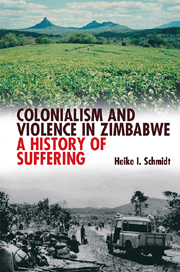2 - Living on the Frontier
Opportunity & Danger
Published online by Cambridge University Press: 05 May 2013
Summary
An elder, when asked about the history of the Honde Valley, first related his genealogy and family history. Then he went on to say that ‘Long back, this country was a vast area, with no boundaries. Borders were set up after the arrival of the Portuguese and, er … and Cecil Rhodes. That was when they limited movement of people …. [Previously] people settled freely.’ The creation of the border between Rhodesia and Portuguese East Africa contributed significantly to the making of the valley as a frontier area. However, it did not impose as much of a rupture as the elder claims with his narrative of colonial alienation: the colonial border was not the first or only boundary in the area. Before the advent of colonial partition, the valley and its inhabitants were already bounded in various ways: topographical and climatic separation as well as cultural and political demarcation. All these boundaries were continually re-delineated and thus their meaning locally made during ongoing negotiation processes that mediated a sense of belonging with outside threats. Hence, the frontier identity, located in a field of tension between opportunity and danger emerged.
The valley has been prone to violence from the 1830s at the very least. In the nineteenth century, it took shape as a frontier area. Newcomers were usually attracted by the opportunities such an area offers, for example, ample land and remoteness from centralised political authority.
- Type
- Chapter
- Information
- Colonialism and Violence in ZimbabweA History of Suffering, pp. 33 - 75Publisher: Boydell & BrewerPrint publication year: 2013

